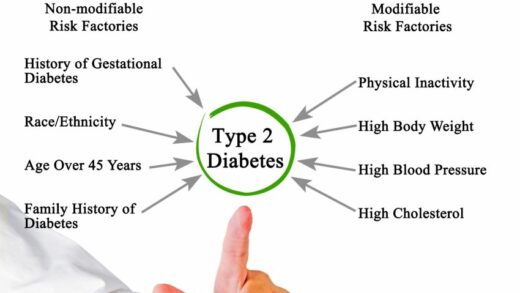Injuries are a common occurrence in everyday life, and they can range from mild to severe. Whether it’s a sprained ankle, a broken bone, or a cut, it’s important to assess the extent of the injury to determine the appropriate treatment plan. Understanding the extent of the injury is critical in making informed decisions about treatment and preventing further damage. This article aims to provide a comprehensive guide on how to assess and treat injuries and the importance of determining the extent of the injury.
Extent of the Injury: What Is It?
The extent of the injury refers to the severity of the damage caused by the injury. It can be classified as mild, moderate, or severe, depending on the degree of damage to the affected area. Understanding the extent of the injury is essential for proper diagnosis, treatment, and management of the injury. Some of the factors that determine the extent of the injury include:
- The type of injury
- The location of the injury
- The extent of tissue damage
- The amount of force involved
- The age and health of the patient
Assessing the Extent of the Injury
Assessing the extent of the injury is crucial in determining the appropriate treatment plan. The assessment should involve a thorough examination of the affected area to determine the severity of the injury. Here are some of the steps involved in assessing the extent of the injury:
- Observation: The first step is to observe the affected area for any visible signs of injury, such as swelling, bruising, or deformity.
- Palpation: This involves touching and feeling the injured area to identify any tenderness, pain, or lumps.
- Range of motion: Assessing the range of motion can help identify any limitations or pain when moving the affected area.
- Imaging: X-rays, MRI, CT scan or ultrasound may be needed to confirm the extent of the injury or determine if there are any underlying fractures or damage to internal organs.
- Consultation: Seeking the advice of a medical professional is essential in assessing the extent of the injury, especially in cases of severe injuries.
Extent of the Injury Headings
- Mild Injuries: How to Recognize and Treat Them
- Moderate Injuries: Symptoms and Treatment
- Severe Injuries: Signs and Emergency Response

Mild Injuries: How to Recognize and Treat Them
Mild injuries are those that cause minor damage to the affected area, and they can be treated at home. Some of the common mild injuries include:
- Sprains and strains
- Bruises
- Minor cuts and scrapes
- Mild burns
Symptoms of mild injuries include pain, swelling, and redness. To treat mild injuries, follow the RICE method:
- Rest: Avoid using the affected area and rest it as much as possible.
- Ice: Apply ice to the affected area for 20 minutes at a time, several times a day.
- Compression: Use a bandage or wrap to compress the affected area to reduce swelling.
- Elevation: Elevate the affected area to reduce swelling and promote healing.
Moderate Injuries: Symptoms and Treatment
Moderate injuries are those that cause moderate damage to the affected area and require medical attention. Some of the common moderate injuries include:
- Fractures
- Deep cuts
- Dislocations
- Second-degree burns
Symptoms of moderate injuries include severe pain, swelling, and limited mobility. Treatment for moderate injuries may involve:
- Immobilization: Immobilizing the affected area to prevent further damage is critical in treating moderate injuries. This may involve using a cast, splint, or brace.
- Medications: Over-the-counter pain medications such as ibuprofen or acetaminophen may be used to manage pain and reduce inflammation.
- Physical therapy: After the initial healing phase, physical therapy may be necessary to restore mobility and strength to the affected area.
Severe Injuries: Signs and Emergency Response
Severe injuries are those that cause significant damage to the affected area and require immediate medical attention. Some of the common severe injuries include:
- Major trauma to the head, neck, or back
- Third-degree burns
- Severe fractures
- Deep wounds

Symptoms of severe injuries include severe pain, excessive bleeding, difficulty breathing, loss of consciousness, or paralysis. In the case of severe injuries, it is important to seek emergency medical care immediately. In some cases, delaying treatment can lead to permanent damage or even death.
FAQs
What should I do if I suspect a severe injury?
If you suspect a severe injury, call emergency services immediately. Delaying treatment can be life-threatening.
Can I treat a moderate injury at home?
While some moderate injuries can be treated at home, it’s always best to seek medical attention. A medical professional can properly assess the extent of the injury and provide appropriate treatment.
How long does it take for an injury to heal?
The healing time for an injury varies depending on the type and extent of the injury. Mild injuries can heal in a few days, while severe injuries may take weeks or even months to heal completely.
Can physical therapy help with injury recovery?
Yes, physical therapy can help restore mobility, strength, and flexibility to the affected area, making it an essential part of the recovery process.
Conclusion
Injuries are a part of life, and understanding the extent of the injury is crucial in providing appropriate treatment and preventing further damage. Whether it’s a mild, moderate, or severe injury, seeking medical attention and following the recommended treatment plan can help speed up the recovery process and prevent long-term damage. By assessing the extent of the injury and taking the necessary steps to treat it, individuals can take control of their health and well-being.






















